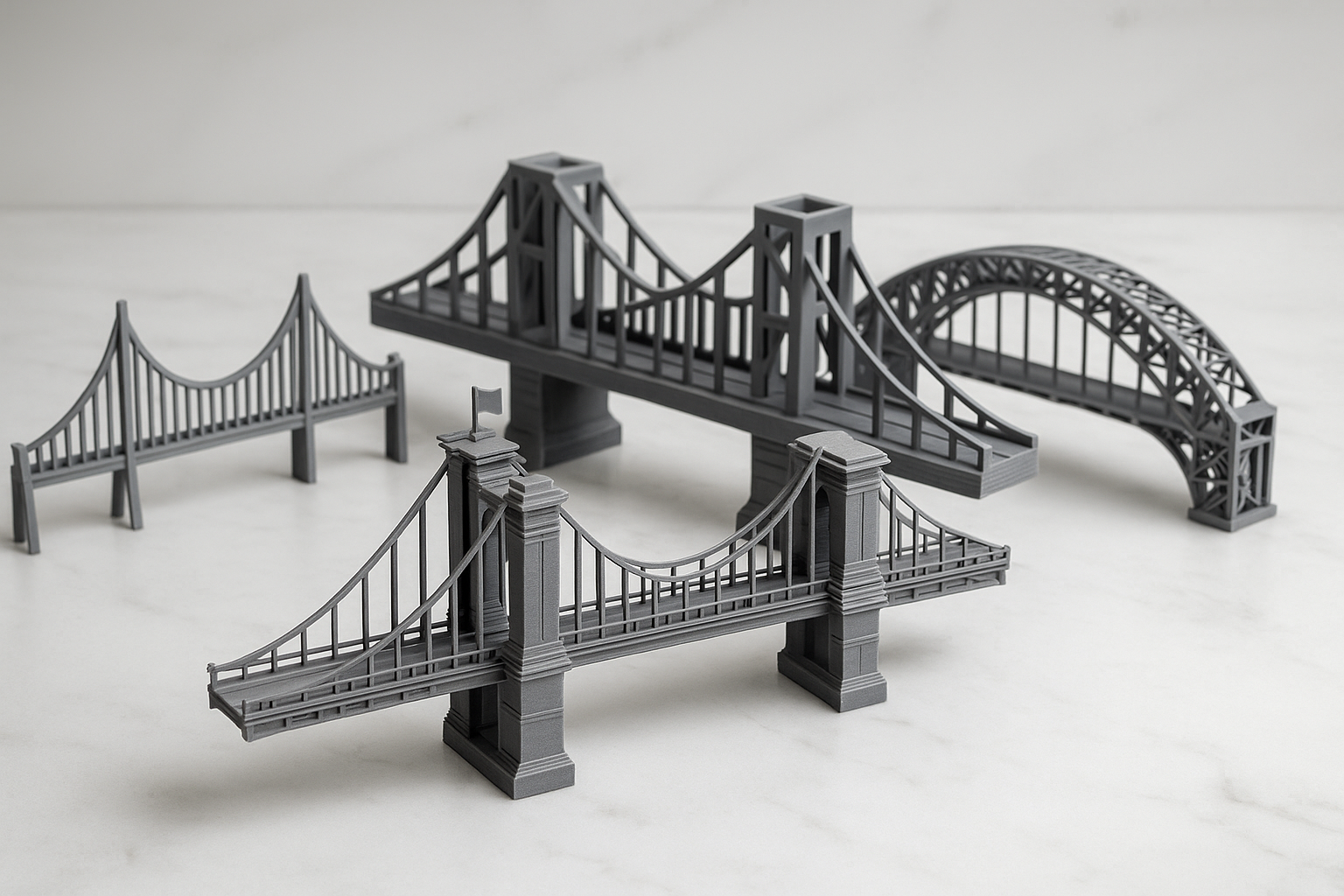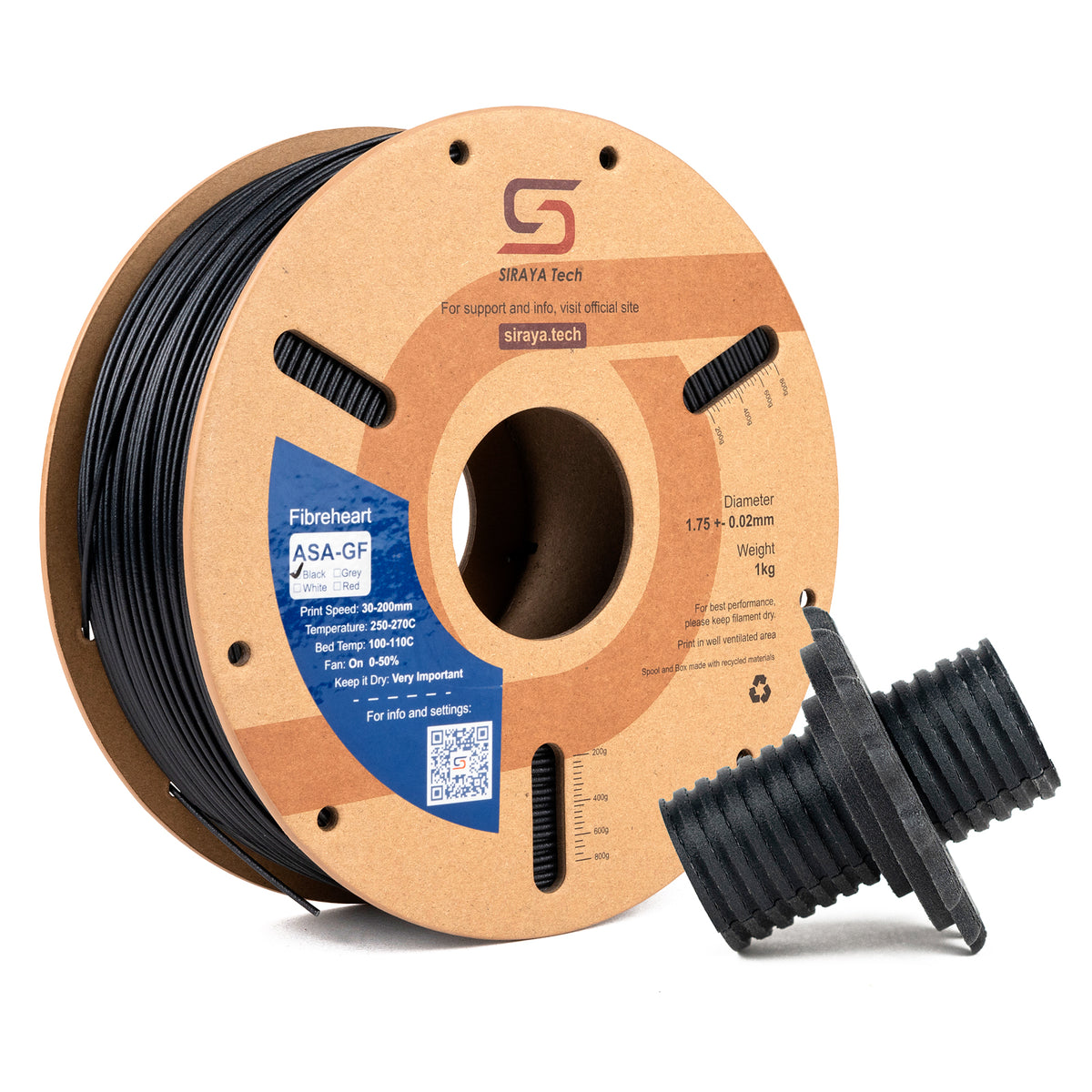3D printing has opened up a new world of creativity and innovation, and bridges are one of the most fascinating examples of this technology in action.
A 3D printed bridge can be both a large-scale engineering project and a small, detailed model that helps people learn how bridges work. From classroom experiments to real-world construction, 3D printed bridges show how technology can make design smarter, faster, and more sustainable.
Keep reading to know how these bridges are made, what materials are used, and how you can create your own model.
What Is a 3D Printed Bridge?
A 3D printed bridge is a structure created using 3D printing technology, where materials are layered to form the shape of a bridge. Instead of traditional construction methods that rely on molds or manual assembly, 3D printing uses digital designs to build bridges directly from a computer model. This process allows for more creativity, precision, and less material waste.
3D printed bridges can range from small models made for school projects to full-sized pedestrian bridges built from concrete or steel. They show how 3D printing can make complex designs possible while saving time and resources.
How Does 3D Printing Work in Bridge Design?
To understand 3D printed bridges, it helps to know how 3D printing itself works. The process begins with a digital design, which is sliced into thin layers. The printer then builds the object layer by layer using materials like plastic, metal, or concrete.
📌 If you want to learn more about how this process turns digital designs into real objects, check out How Does 3D Printing Work for a simple and detailed explanation.
In bridge design, large robotic printers or gantry systems are used to deposit material along a programmed path. This makes it possible to create curved shapes, intricate trusses, and even hollow structures that reduce material use while keeping strength intact.
Different Types of 3D Printed Bridges

3D printed bridges come in many styles, each with its own purpose and design. Here are some of the most common types:
- Arch Bridges: Known for their curved design that evenly distributes weight.
- Truss Bridges: Built using triangular frameworks that make them strong and stable.
- Suspension Bridges: Feature cables or flexible parts that hold up the deck.
- Beam Bridges: Simple and straight, perfect for beginners or small-scale models.
- Cantilever Bridges: Extend horizontally and are supported on only one end.
Each type can be printed as a model for study or scaled up for real-world use.
How to Design a 3D Printed Bridge Model
Designing a 3D printed bridge model starts with choosing the right software and understanding basic engineering principles. You’ll need to think about how weight will be distributed and how each part connects to the next.
📌 For step-by-step guidance on creating your own 3D designs, don’t forget to read How to Design 3D Prints for helpful design tips that make your models stronger and more accurate.
When designing, remember to:
- Keep the proportions realistic.
- Add supports for overhangs.
- Test smaller sections before printing the full model.
Materials Used in 3D Printed Bridges
The materials used in a 3D printed bridge depend on the size and purpose of the project.
- Concrete: Common in full-sized bridges because it’s strong and long-lasting.
- Steel: Used for bridges that need flexibility and strength.
- Polymers (like PLA and ABS): Perfect for small-scale bridge models.
- Composite Materials: Combine fibers and polymers for extra strength and flexibility.
📌 If you want to understand how different materials affect print quality and durability, browse 3D Printing Materials to learn how to choose the right one for your project.
Siraya also offers advanced materials such as ABS-CF, ABS-GF, and ASA-GF, which provide excellent strength, reduced warping, and a smooth finish. These are great for printing durable bridge models or prototypes that need extra toughness.
Resin and 3D Filament You May Shop
Step-by-Step: How to 3D Print a Bridge Model
Creating a 3D printed bridge model is a fun and educational project. Here’s a simple way to get started:
- Find or Design a Model: Create your own design or download free STL files.
- Slice the Model: Use slicing software to prepare your file for printing.
- Choose the Right Settings: Adjust layer height, infill, and supports.
- Print the Model: Start printing and monitor the process.
- Post-Process: Remove supports, sand rough edges, and paint if desired.
Once your model is complete, you can test its strength by placing small weights on top to see how much it can hold.
Famous 3D Printed Bridges Around the World

Several real-world projects have shown what’s possible with 3D printing in bridge construction. Some of the most impressive examples include:
- The MX3D Bridge in Amsterdam: The world’s first 3D printed steel bridge, completed in 2021 using robotic arms.
- The Concrete Bridge in Madrid: The world’s first 3D printed concrete pedestrian bridge, built in 2016 by the Institute for Advanced Architecture of Catalonia (IAAC) and Acciona.
- Shanghai’s 3D Printed Bridge: Known for its elegant curves, the Shanghai bridge is one of the longest 3D printed concrete bridges ever built.
In the United States, researchers are experimenting with large-scale 3D printed concrete structures, showing growing interest in this technology for future infrastructure.
These projects highlight how 3D printing can create strong, efficient, and artistic structures that redefine modern engineering.
Benefits of 3D Printed Bridges
3D printed bridges offer several advantages that make them a promising choice for the future:
- Faster Construction: Building layer by layer reduces time.
- Lower Costs: Less material waste and fewer labor hours.
- Creative Freedom: Complex shapes and patterns can be printed easily.
- Sustainability: Many use recycled or eco-friendly materials.
- Precision: Digital designs ensure accuracy and consistency.
These benefits make 3D printing a valuable tool for both large-scale infrastructure and small educational projects.
Challenges in Creating 3D Printed Bridges
While 3D printing bridges has many advantages, it also comes with challenges. Some of the main issues include:
- Material Limits: Not all materials can handle large-scale printing.
- Regulations: Building codes for 3D printed structures are still developing.
- Printer Size: Large printers are expensive and require expert operation.
-
Durability Testing: Long-term performance data is still being collected.
Despite these challenges, engineers and researchers continue to improve printing methods and materials, making 3D printed bridges safer and more accessible each year.
How 3D Printed Bridges Promote Sustainability
Sustainability is one of the biggest reasons why 3D printed bridges are gaining attention. The technology uses less material, produces minimal waste, and allows for the use of recycled materials. Some 3D printed bridges even include hollow sections that reduce weight and material use without sacrificing strength.
By printing bridges locally, transportation costs and emissions are also reduced. This approach supports sustainability, which focuses on reducing waste and carbon emissions in construction.
Educational Uses of 3D Printed Bridge Models

3D printed bridge models are not only fun to make but also great for learning. They help students understand how bridges distribute weight, how materials behave under pressure, and how design affects stability.
Teachers often use these models in STEM programs to make engineering concepts more hands-on and engaging.
📌 If you’re curious about what else you can create with a 3D printer besides bridges, discover What Can You Make with a 3D Printer for creative ideas and projects you can try next.
Tips for Making a Professional 3D Printed Bridge Model
To make your 3D printed bridge model look polished and realistic, keep these tips in mind:
- Use the Right Material: Stronger filaments like ABS-CF or PETG-CF improve durability.
- Smooth the Surface: Sand and paint your model for a clean finish.
- Add Details: Include railings, textures, or miniature figures for realism.
- Display Properly: Mount your model on a base or stand to prevent damage.
These small touches can make your bridge model stand out and last longer.
3D Filaments You May Shop
Conclusion
The 3D printed bridge represents a major step forward in how we think about building and design. Whether it’s a large pedestrian bridge or a small classroom model, this technology shows how creativity and engineering can come together to make construction smarter and more sustainable.
For more helpful guides and tips about 3D printing and related topics, visit Siraya. You can also explore Siraya’s high-quality products like 3D printing filaments, resins for 3D printing, and platinum silicone crafting materials to create superior results for your next project.
FAQs About 3D Printed Bridges
How strong are 3D printed bridges?
3D printed bridges are designed to be strong and reliable, often matching traditional methods in durability. The strength depends on the materials used and how the bridge is printed. Engineers test each bridge to ensure it can handle weight and environmental conditions.
What materials are used in 3D printed bridges?
Most 3D printed bridges use concrete, steel, or composite materials. For smaller models, plastics like PLA or ABS are common. Each material offers different levels of strength, flexibility, and cost.
How long does it take to print a bridge?
The time needed depends on the size and complexity of the design. Small models can take a few hours, while full-sized pedestrian bridges may take several weeks. Even so, 3D printing is usually faster than traditional construction methods.
Are 3D printed bridges safe for public use?
Yes, 3D printed bridges undergo safety tests before being opened to the public. Engineers check for structural strength, load capacity, and environmental resistance. Many also include sensors that monitor performance over time.
Can I make a 3D printed bridge model at home?
Yes, with a desktop 3D printer and a suitable design file, you can print your own bridge model. It’s a great way to learn about engineering, design, and how different materials behave under stress.





